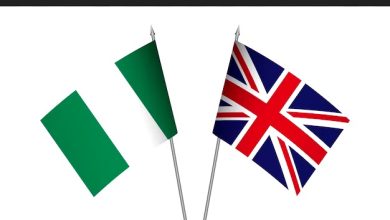Unlocking Career Opportunities: Communication Assistant Jobs at IITA, Abuja Apply Now
Crafting Success: The Art and Science of Content Creation

Unlocking Career Opportunities: Communication Assistant Jobs at IITA, Abuja
Introduction:
In the ever-evolving landscape of international agricultural research and development, organizations like the International Institute of Tropical Agriculture (IITA) play a pivotal role in promoting sustainable and efficient agriculture. Located in Abuja, IITA is on the lookout for talented individuals to join their team as Communication Assistants. In this blog post, we’ll delve into the details of these exciting job opportunities and provide insights on how to apply.

Why IITA Matters
IITA is a non-profit agricultural research institution with a primary focus on improving food security and livelihoods in tropical regions. With a rich history spanning over five decades, they have made significant contributions to agricultural innovations, research, and development.
Their work encompasses various facets of agriculture, from crop improvement and pest management to soil health and climate-smart farming practices. Effective communication is integral to spreading the knowledge, innovations, and solutions that IITA generates, and that’s where the role of Communication Assistants comes into play.
The Role of a Communication Assistant at IITA, Abuja
Communication Assistants at IITA are responsible for creating, curating, and disseminating content that highlights the organization’s achievements, ongoing projects, and research findings. They play a vital role in ensuring that IITA’s work reaches a broader audience, from local farmers to global policy-makers.
Key responsibilities of a Communication Assistant at IITA include:
- Content Creation: Developing compelling and informative content, such as articles, reports, press releases, and social media updates, to showcase IITA’s activities and achievements.
- Media Relations: Building and maintaining relationships with media outlets to ensure that IITA’s work is featured in the press.
- Event Coverage: Attending and covering events, workshops, and conferences organized by IITA, ensuring that they receive adequate media attention.
- Social Media Management: Managing and updating IITA’s social media accounts, engaging with followers, and increasing the organization’s online presence.
- Photography and Videography: Capturing visual content to supplement written materials and increase engagement.
Qualifications and Requirements
To be considered for the role of a Communication Assistant at IITA, applicants should meet the following criteria:
- Educational Background: A degree in communication, journalism, public relations, or a related field.
- Experience: Previous experience in a communications role is highly beneficial. Experience in agriculture-related communication is a plus.
- Excellent Writing Skills: Strong writing skills and the ability to adapt content for various audiences.
- Tech-Savvy: Proficiency in using communication tools, content management systems, and social media platforms.
- Interpersonal Skills: Effective communication, teamwork, and relationship-building abilities.
How to Apply
If you are passionate about making a difference in the world of agriculture and possess the skills required for a Communication Assistant role at IITA, you can apply by visiting their official website. Look for the “Careers” or “Jobs” section, where you’ll find the details of the open positions, including Communication Assistant roles. Follow the instructions for submitting your application, which may include uploading your resume, cover letter, and other relevant documents.

Crafting Success: The Art and Science of Content Creation
Content is king in today’s digital landscape, and the creators behind it are the unsung heroes. Whether you’re a seasoned content creator or just starting, this blog post explores the ins and outs of content creation, the creative process, and the impact it can have on your audience and brand.
What is Content Creation?
Content creation is the process of generating valuable, relevant, and engaging content for a target audience. It encompasses a wide range of mediums, from written articles and blog posts to captivating videos, striking images, and interactive social media updates. The primary goal of content creation is to inform, entertain, or inspire your audience while building a brand’s online presence.
The Art of Content Creation:
- Understanding Your Audience: Effective content creators take the time to understand their target audience. What are their needs, interests, and pain points? This knowledge informs the direction of your content.
- Creative Storytelling: Storytelling is a potent tool. Weave compelling narratives into your content to capture your audience’s attention and evoke emotions.
- Quality Over Quantity: It’s not about churning out endless content; it’s about crafting quality content. Well-researched, insightful, and meticulously edited content stands out.
- Visual Appeal: Visual elements, such as images, videos, and infographics, enhance content and make it more engaging.
- Consistency: Regular posting schedules keep your audience engaged and eager for your next piece of content.
The Science of Content Creation:
- SEO and Keyword Research: Utilizing search engine optimization (SEO) principles and effective keyword research can help your content rank higher in search engine results, increasing its visibility.
- Data-Driven Decision Making: Analyze data to understand what works and what doesn’t. Tools like Google Analytics and social media insights provide valuable feedback.
- Content Calendar: Plan content creation in advance with a content calendar. This helps maintain consistency and ensures you cover a variety of topics.
- A/B Testing: Experiment with different content formats, headlines, and visuals to discover what resonates most with your audience.
Tools for Content Creation:
- Content Management Systems (CMS): Platforms like WordPress, Joomla, and Drupal make publishing and managing content easy.
- Graphic Design Tools: Tools like Canva and Adobe Creative Cloud are essential for creating visuals.
- Video Editing Software: Software like Adobe Premiere Pro and Final Cut Pro are crucial for video content.
- Keyword Research Tools: Use tools like SEMrush, Ahrefs, or Google Keyword Planner to identify relevant keywords.
Challenges in Content Creation:
- Content Fatigue: The digital world is saturated with content. Standing out is a constant challenge.
- Ever-Changing Algorithms: Platforms like social media and search engines continuously update their algorithms, affecting content visibility.
- Time and Resources: Content creation can be time-consuming, and finding the right resources is crucial.

Building Bridges: The Power of Effective Media Relations
In today’s information age, an organization’s success often hinges on its ability to connect with the media. Media relations is a powerful tool for building and managing an organization’s reputation, increasing visibility, and effectively communicating with the public. In this blog post, we’ll delve into the world of media relations, exploring its importance, strategies, and best practices.
Understanding Media Relations:
Media relations is the strategic practice of managing an organization’s relationship with the media, including journalists, reporters, editors, and media outlets. Its primary aim is to create a positive image and communicate key messages to the public through various media channels.
The Importance of Media Relations:
- Credibility and Trust: Positive media coverage lends credibility to an organization’s activities and helps build trust with the public.
- Brand Visibility: Effective media relations can significantly increase an organization’s visibility in the market.
- Crisis Management: In times of crisis, media relations experts can help control the narrative and manage public perception.
- Public Awareness: Media relations is a potent tool for raising awareness about an organization’s mission, initiatives, and accomplishments.
Media Relations Strategies:
- Know Your Audience: Understand the preferences, interests, and concerns of your target audience and tailor your messaging accordingly.
- Build Relationships: Develop strong, long-term relationships with journalists and media professionals. Regularly interact with them even when you don’t have immediate news.
- Craft Newsworthy Stories: Identify what makes your organization’s activities newsworthy and frame your stories accordingly.
- Press Releases: Create well-structured and informative press releases to share important news and events.
- Media Training: Ensure that your organization’s spokespersons are trained to communicate effectively with the media.
Best Practices in Media Relations:
- Honesty and Transparency: Always be honest with the media, even in difficult situations. Transparency builds trust.
- Timely Responses: Respond promptly to media inquiries and provide accurate information.
- Prepare for Interviews: Prepare thoroughly for media interviews to ensure your messages are clear and on-point.
- Stay Active on Social Media: Use social media platforms to engage with journalists, share content, and participate in relevant discussions.
- Monitor and Measure: Keep track of media coverage, mentions, and sentiment about your organization to evaluate the effectiveness of your media relations efforts.
Challenges in Media Relations:
- Negative Coverage: Dealing with negative media coverage or a crisis can be a significant challenge.
- Changing Media Landscape: The evolving media landscape, including the rise of digital media and social networks, presents new challenges and opportunities.
- Balancing Act: Balancing the need to control the narrative with respecting the media’s independence can be delicate.
Navigating the Digital Landscape: The Art of Social Media Management
In today’s digital world, the success of businesses, brands, and influencers hinges on their ability to master the art of social media management. Whether you’re promoting a product, building a personal brand, or engaging with an audience, effective social media management is a cornerstone of online success. In this blog post, we will explore the world of social media management, its importance, best practices, and the tools that can help you succeed in the ever-evolving landscape of social platforms.
The Significance of Social Media Management:
Social media management is the strategic and organized approach to creating, publishing, and analyzing content on various social media platforms. It’s crucial for several reasons:
- Audience Engagement: Social media platforms offer direct access to your audience, providing opportunities for engagement and interaction.
- Brand Visibility: A well-managed social media presence increases brand visibility and awareness.
- Content Distribution: It’s a powerful channel for sharing your content, whether it’s blog posts, videos, or visuals.
- Customer Support: Social media is often the first point of contact for customer queries and feedback.
Effective Social Media Management Strategies:
- Define Your Goals: Start by setting clear and achievable social media goals, whether it’s brand awareness, lead generation, or customer support.
- Know Your Audience: Understand your target audience’s preferences, needs, and pain points to tailor your content effectively.
- Content Planning: Create a content calendar outlining the topics, formats, and posting schedules.
- Engagement and Community Building: Actively engage with your followers, respond to comments, and build a community around your brand or content.
- Analytics and Optimization: Regularly analyze your social media metrics to understand what’s working and what needs improvement.
Best Practices in Social Media Management:
- Consistency: Maintain a regular posting schedule to keep your audience engaged.
- Quality Over Quantity: Focus on high-quality content that provides value rather than posting incessantly.
- Visual Appeal: Use eye-catching visuals, such as images and videos, to stand out in crowded feeds.
- Engage Authentically: Be genuine and authentic in your interactions with your audience.
- Adapt to Platform Changes: Stay updated on the latest changes in algorithms, features, and trends on each social platform.
Social Media Management Tools:
- Scheduling Tools: Platforms like Hootsuite and Buffer allow you to schedule posts in advance.
- Analytics Tools: Tools like Google Analytics and social media insights provide data to evaluate your performance.
- Content Creation Tools: Canva, Adobe Spark, and Adobe Creative Cloud are essential for creating visuals.
- Community Management Tools: Tools like Sprout Social help manage interactions and track mentions.
Challenges in Social Media Management:
- Time Constraints: Managing multiple social media accounts can be time-consuming.
- Content Overload: It’s easy to get lost in the sea of content; standing out is a constant challenge.
- Negative Feedback and Crises: Negative comments and PR crises require a delicate response.
Conclusion
Joining the team at IITA, Abuja, as a Communication Assistant offers a unique opportunity to contribute to global agricultural development, share impactful stories, and make a real difference. By applying your communication skills in this context, you’ll help IITA continue its mission of improving food security and livelihoods in tropical regions.
If you’re ready to embark on a career that combines communication and agriculture, don’t hesitate to explore the Communication Assistant jobs at IITA in Abuja and take the first step towards a rewarding and impactful career.







